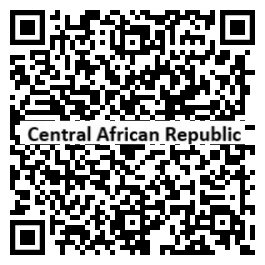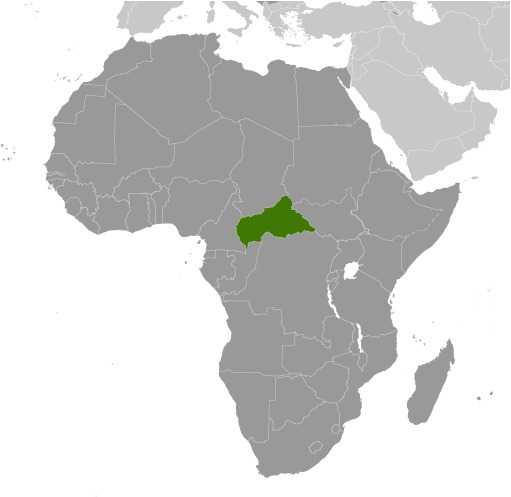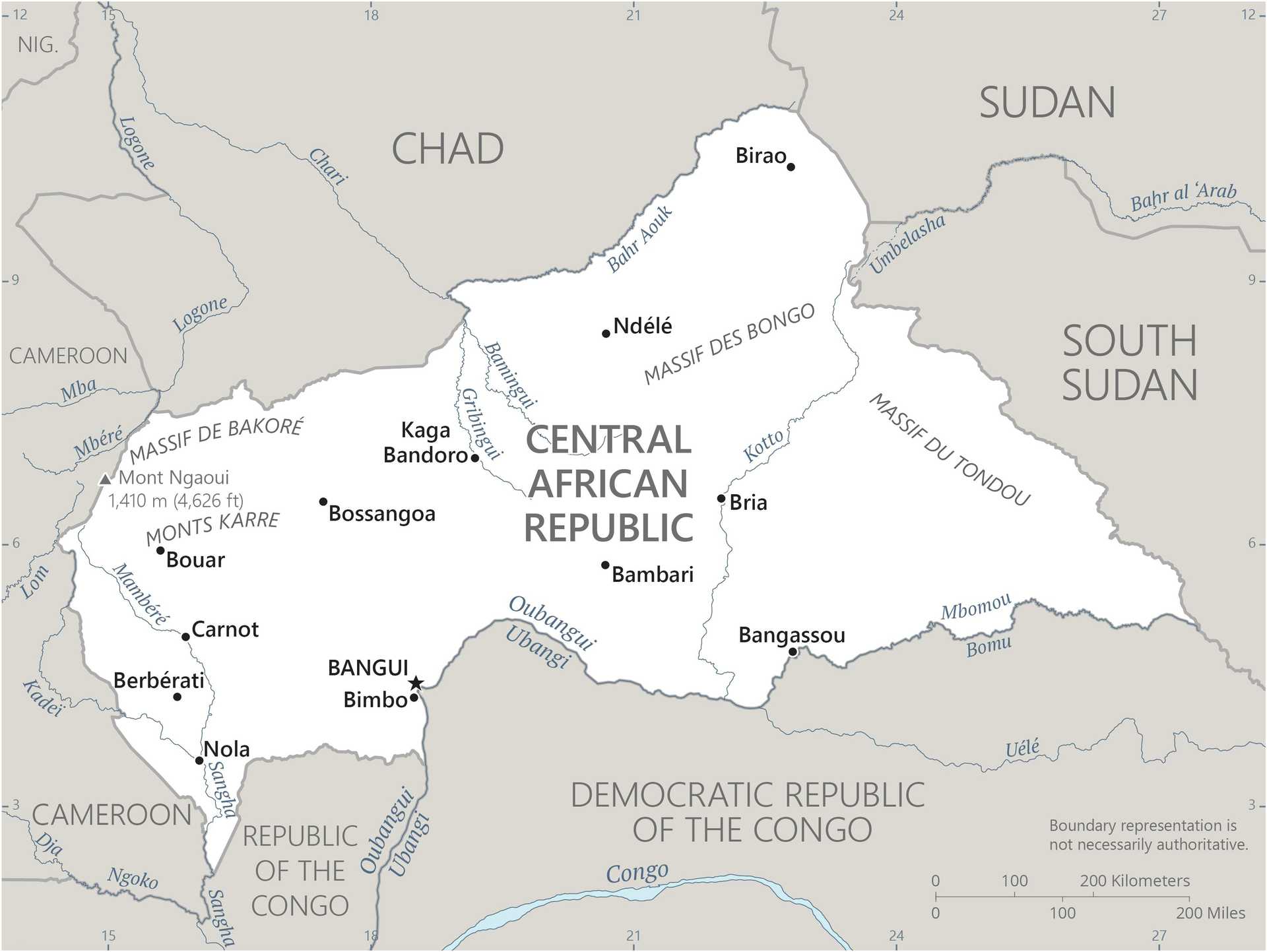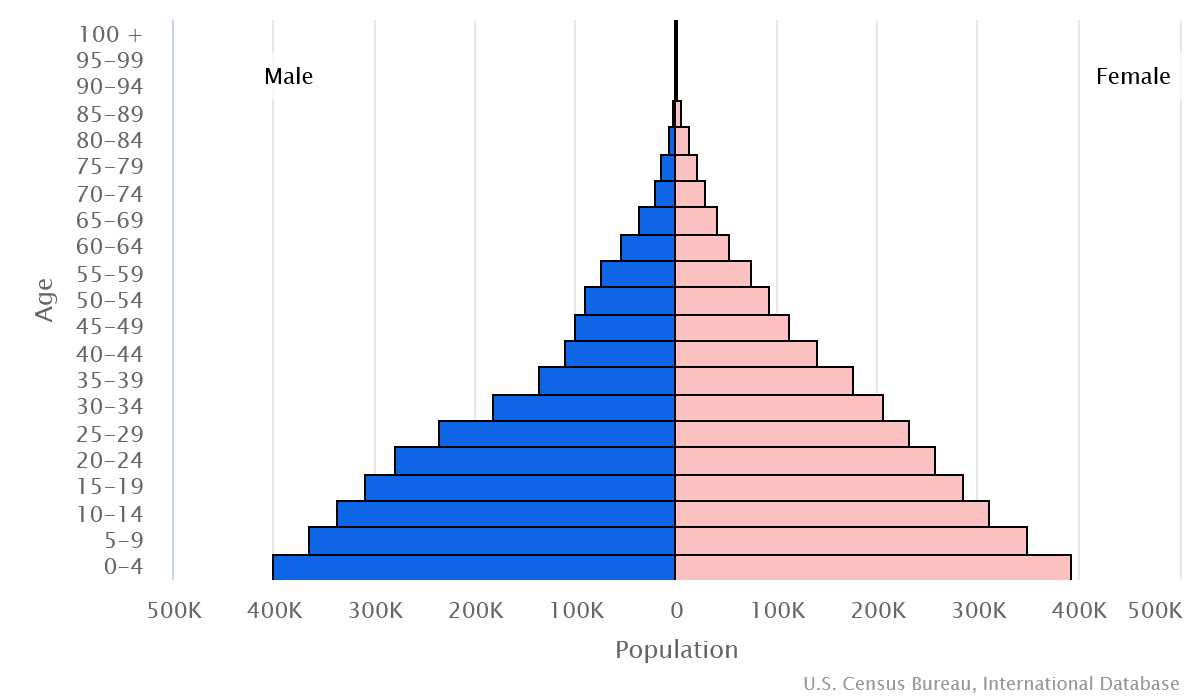Introduction
Background
The French colony of Ubangi-Shari became the Central African Republic upon independence in 1960. After three tumultuous decades of misrule -- mostly by military governments -- civilian rule was established in 1993 but lasted only a decade. Peace agreements between the government and armed factions have had little effect, and armed groups operate openly.
Geography
Area
total : 622,984 sq km
land: 622,984 sq km
water: 0 sq km
Climate
tropical; hot, dry winters; mild to hot, wet summers
Natural resources
diamonds, uranium, timber, gold, oil, hydropower
People and Society
Population
total: 5,650,957
Ethnic groups
Baya 28.8%, Banda 22.9%, Mandjia 9.9%, Sara 7.9%, M'Baka-Bantu 7.9%, Arab-Fulani (Peuhl) 6%, Mbum 6%, Ngbanki 5.5%, Zande-Nzakara 3%, other Central African Republic ethnic groups 2%, non-Central African Republic ethnic groups .1% (2003 est.)
Languages
French (official), Sangho (lingua franca and national language), tribal languages
Religions
Roman Catholic 34.6%, Protestant 15.7%, other Christian 22.9%, Muslim 13.8%, ethnic religionist 12%, Baha'i 0.2%, agnostic/atheist 0.7% (2020 est.)
Population growth rate
1.76% (2024 est.)
Government
Government type
presidential republic
Capital
name: Bangui
Executive branch
chief of state: President Faustin-Archange TOUADÉRA (since 30 March 2016)
head of government: Prime Minister Félix MOLOUA (since 7 February 2022)
Legislative branch
description: unicameral National Assembly or Assemblee Nationale (140 seats; members directly elected in single-seat constituencies by absolute majority vote with a second round if needed; members serve 5-year terms)
Economy
Economic overview
enormous natural resources; extreme poverty; weak public institutions and infrastructure; political and gender-based violence have led to displacement of roughly 25% of population; Bangui-Douala corridor blockade reduced activity and tax collection; strong agricultural performance offset COVID-19 downturn
Real GDP (purchasing power parity)
$5.849 billion (2023 est.)
$5.798 billion (2022 est.)
$5.769 billion (2021 est.)
Real GDP per capita
$1,000 (2023 est.)
$1,000 (2022 est.)
$1,100 (2021 est.)
Agricultural products
cassava, groundnuts, yams, coffee, maize, sesame seeds, bananas, taro, sugarcane, beef (2022)
Industries
gold and diamond mining, logging, brewing, sugar refining
Exports
$293.074 million (2022 est.)
$332.869 million (2021 est.)
$353.021 million (2020 est.)
Exports - partners
UAE 40%, Italy 11%, Pakistan 10%, China 10%, France 6% (2022)
Exports - commodities
gold, wood, diamonds, vehicle parts/accessories, electrical machinery (2022)
Imports
$784.669 million (2022 est.)
$778.395 million (2021 est.)
$799.195 million (2020 est.)
Imports - partners
Cameroon 28%, US 8%, China 7%, France 6%, South Korea 5% (2022)
Imports - commodities
refined petroleum, engines, aircraft, prefabricated buildings, packaged medicine (2022)
Exchange rates
Cooperation Financiere en Afrique Centrale francs (XAF) per US dollar -
Page last updated: Wednesday, July 24, 2024




